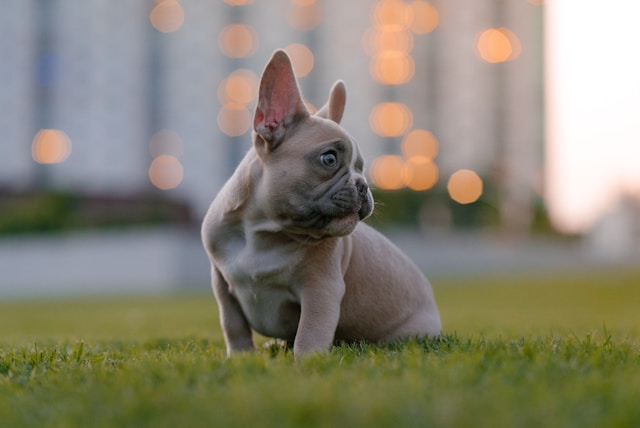Persian Cat Breed Information & Characteristics and Glucosamine for Dogs: Key to Healthy Joints
When it comes to pet care, understanding the specific needs of different breeds and species is crucial for their well-being. This blog covers two important topics: the unique characteristics of the Persian cat breed and the role of glucosamine in maintaining your dog’s joint health. Whether you’re a cat lover interested in the regal Persian or a dog owner looking to support your pup’s mobility, this guide offers valuable insights.
Part 1: Persian Cat Breed Information & Characteristics
Historical Background
Origins and Development
The Persian cat is one of the most ancient and revered cat breeds, with a history that dates back hundreds of years.
- Ancient Beginnings: The Persian cat’s origins trace back to Persia (modern-day Iran), where they were first bred for their long, luxurious coats and calm demeanor.
- Introduction to Europe: Persian cats were brought to Europe in the 1600s, quickly gaining popularity among royalty and the elite due to their exotic looks and gentle nature.
- Breed Evolution: Over centuries, breeders have refined the Persian’s appearance, focusing on its distinct flat face and thick coat, which have become synonymous with the breed.
Physical Characteristics
The Persian cat is known for its striking appearance, which sets it apart from other cat breeds.
Coat and Color Varieties
- Luxurious Coat: The Persian’s coat is one of its most defining features. It is long, dense, and soft, requiring regular grooming to maintain its beauty and prevent matting.
- Color Diversity: Persian cats come in a wide range of colors and patterns, including solid, tabby, bicolor, and more. Popular colors include white, black, blue, cream, and silver.
- Grooming Needs: Daily brushing is essential for keeping the Persian’s coat in top condition. Regular baths are also recommended to reduce shedding and maintain the coat’s cleanliness.
Facial Features
- Brachycephalic Skull: Persian cats have a brachycephalic skull, characterized by a flat face and short nose. This gives them their distinctive “pushed-in” facial appearance.
- Expressive Eyes: Large, round eyes are a hallmark of the Persian breed. Eye colors can range from deep blue to striking copper, and some Persians may have odd-colored eyes.
- Small Ears and Full Cheeks: The breed’s small, rounded ears and full cheeks contribute to their sweet, doll-like expression.
Body Structure
- Size and Build: Persians are medium to large cats with a sturdy, cobby body. Their short, strong legs support their solid frame, giving them a well-proportioned appearance.
- Tail: The Persian’s tail is short and bushy, covered in the same long fur as the rest of the body, adding to their overall plush look.
Temperament and Personality
Persian cats are not only admired for their looks but also for their calm and affectionate nature.
Gentle and Affectionate
- Quiet Companions: Persians are known for their quiet and gentle demeanor. They prefer a peaceful environment and enjoy lounging in comfortable spots around the house.
- Loving Nature: Persian cats are affectionate and enjoy being close to their owners. They are not overly demanding but appreciate attention and cuddles.
- Compatibility with Other Pets: Due to their calm nature, Persian cats generally get along well with other pets, including dogs, making them a good choice for multi-pet households.
Interaction with Family Members
- Good with Children: Persians are tolerant and patient, making them suitable for families with children. However, they thrive in environments where they are treated gently and respectfully.
- Bonding with Owners: Persian cats form strong bonds with their owners and may prefer to spend most of their time in close proximity to their favorite people.
Health Considerations
While Persian cats are generally healthy, their unique physical characteristics can make them susceptible to certain health issues.
Brachycephalic Syndrome
- Respiratory Challenges: The breed’s flat face can lead to respiratory issues, particularly in hot or humid weather. Owners should ensure that their Persian cat has a cool, well-ventilated living space.
- Eye Conditions: Persians are prone to eye problems due to their large, prominent eyes. Regular eye cleaning and veterinary check-ups are important to prevent infections and other issues.
Polycystic Kidney Disease (PKD)
- Genetic Predisposition: PKD is a common genetic condition in Persian cats, leading to the development of cysts in the kidneys. Reputable breeders screen for PKD to reduce its prevalence.
- Health Monitoring: Regular veterinary visits and monitoring kidney function can help manage PKD and maintain the cat’s quality of life.
Dental Health
- Oral Hygiene: Persian cats are prone to dental problems, such as gingivitis and tooth decay. Regular brushing and professional dental cleanings are essential for maintaining oral health.
- Diet Considerations: Feeding a diet that includes crunchy kibble can help reduce plaque build-up and support dental health.
Grooming and Care
Persian cats require a higher level of grooming and care due to their long coats and specific health needs.
Daily Grooming Routine
- Brushing: Daily brushing is necessary to prevent tangles and mats in the Persian’s long coat. A wide-toothed comb or slicker brush is recommended.
- Bathing: Regular baths, usually every few weeks, help keep the Persian’s coat clean and reduce shedding. Use a gentle, cat-specific shampoo to avoid skin irritation.
- Eye and Ear Care: Clean the Persian’s eyes daily to prevent tear staining and reduce the risk of infections. Regular ear cleaning is also important to prevent wax build-up and infections.
- Nail Trimming: Trim the Persian’s nails regularly to prevent overgrowth and discomfort.
Ideal Living Environment
- Indoor Living: Persian cats are best suited to an indoor lifestyle, where they are protected from outdoor hazards and can enjoy a stable, comfortable environment.
- Comfortable Spaces: Provide your Persian with cozy, quiet spots to relax, along with a clean litter box, fresh water, and a balanced diet.
Choosing a Persian Cat
If you’re considering adding a Persian cat to your family, it’s important to choose a healthy, well-socialized kitten.
Reputable Breeders
- Health Testing: Look for breeders who perform health tests for genetic conditions like PKD and ensure that their cats are well-socialized and healthy.
- Visiting the Cattery: If possible, visit the breeder’s cattery to see the living conditions and meet the kittens’ parents, ensuring that they are raised in a clean, loving environment.
Adoption Options
- Rescue Organizations: Many Persian cats are available for adoption through breed-specific rescue organizations. Adopting a rescue cat can be a rewarding experience and provide a loving home to a cat in need.
- Shelters: Local animal shelters may also have Persian cats available for adoption, offering an opportunity to give a cat a second chance.
Part 2: Glucosamine for Dogs: Key to Healthy Joints
Understanding Glucosamine
Glucosamine is a naturally occurring compound found in cartilage, the tissue that cushions joints. It plays a crucial role in maintaining joint health and mobility in dogs.
What is Glucosamine?
- Natural Compound: Glucosamine is an amino sugar that is a building block for cartilage. It helps to maintain the structure and function of joint cartilage by supporting the production of glycosaminoglycans, which are essential for joint health.
- Supplemental Form: In dogs, glucosamine is often provided as a dietary supplement to support joint health, especially in aging dogs or those prone to joint issues.
Benefits of Glucosamine for Dogs
Glucosamine supplements can offer several benefits for dogs, particularly those suffering from joint problems.
Supports Joint Health
- Cartilage Repair: Glucosamine helps to repair and maintain cartilage, reducing the risk of joint degradation and promoting overall joint health.
- Increased Mobility: By supporting healthy cartilage, glucosamine can help improve joint function, allowing dogs to move more easily and comfortably.
Reduces Inflammation
- Anti-Inflammatory Properties: Glucosamine has natural anti-inflammatory effects, which can help reduce joint pain and swelling in dogs suffering from conditions like arthritis.
- Pain Relief: By reducing inflammation, glucosamine can also provide pain relief, improving the quality of life for dogs with joint issues.
Slows Progression of Osteoarthritis
- Arthritis Management: For dogs with osteoarthritis, glucosamine can slow the progression of the disease by supporting cartilage health and reducing joint inflammation.
- Long-Term Support: Regular use of glucosamine can help manage the symptoms of arthritis and improve long-term joint function in dogs.
How to Administer Glucosamine to Dogs
Glucosamine is available in various forms, making it easy to incorporate into your dog’s daily routine.
Forms of Glucosamine
- Tablets and Chews: Glucosamine supplements are commonly available as flavored tablets or chews, which are easy to administer and often well-accepted by dogs.
- Powdered Supplements: Glucosamine can also be found in powdered form, which can be mixed into your dog’s food for easy consumption.
- Liquid Form: Liquid glucosamine is another option, particularly for dogs
4o











Leave a Reply